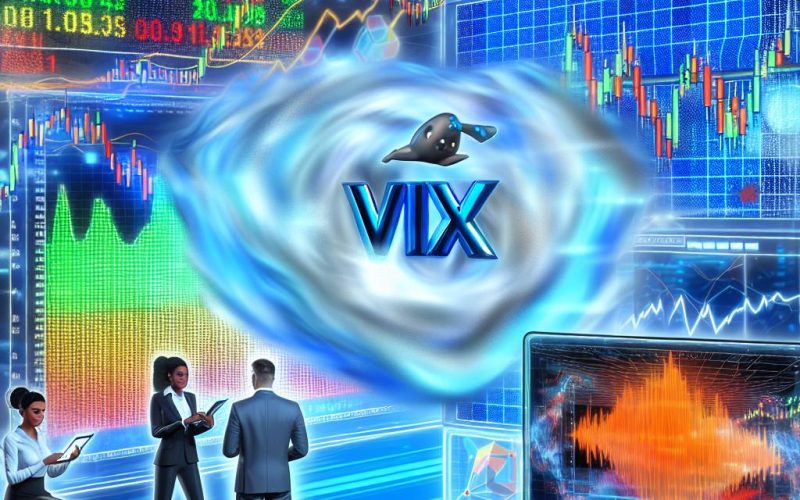Understanding Market Volatility and the VIX
Market volatility is a fundamental concept in the world of finance, describing the rate at which the price of securities experiences changes. For investors, this volatility is crucial, as it often indicates the level of risk involved in a market or security. Volatility is characterized by the frequency and magnitude of the price changes observed over a specified period. Higher volatility generally implies greater uncertainty and risk, as prices can swing dramatically in either direction within a short timeframe. Investors and analysts often look to specific tools to track and understand this volatility. One of the most prominent tools used by market participants is the CBOE Volatility Index, more commonly known as the VIX. This index is a standard measure and market benchmark that provides insights into market expectations regarding volatility over the near term, specifically the next 30 days.
The Role of the VIX
The VIX, unveiled by the Chicago Board Options Exchange (CBOE), serves as a vital tool in assessing market sentiment. Frequently referred to as the “fear index,” the VIX gives traders and investors a quantified measure of the level of fear or anxiety in the market. Its primary mechanism is the tracking of S&P 500 index options prices, which are a reflection of market participants’ expectations about future volatility of the underlying index. When the VIX presents a high reading, it signals that traders expect substantial changes in the market. This could mean large price swings or increased risk aversion among investors. Conversely, a low VIX reading suggests that the market is perceived as stable, and fewer surprises or major moves are anticipated.
How the VIX is Calculated
The calculation of the VIX is grounded in a complex mathematical formula that incorporates a wide variety of S&P 500 index options. At its core, this involves synthesizing the implied volatilities of a diverse set of option contracts, including both calls and puts. The implied volatility is the market’s expectation of how volatile the market will be in the future. By assigning appropriate weights and averaging these values, the formula arrives at a single, standardized number that represents expected future volatility. This process, while sophisticated, culminates in a straightforward figure that market participants can use as a barometer of market sentiment.
The VIX and Investment Strategies
One of the key reasons the VIX is such a critical tool is because of its utility in forming various investment strategies. It can be employed in several ways, primarily for hedging purposes or engagement in speculative trading.
Hedging Portfolios: Among the most prevalent uses of the VIX is to hedge investment portfolios against potential market downturns. During periods where the market anticipates heightened volatility, VIX futures and options often increase in value. This inverse relationship can provide an effective hedge as these instruments potentially gain value when traditional securities decline.
Speculative Trading: For more adventurous investors, trading VIX derivatives is a way to speculate based on expected future market volatility. By doing so, they can engage in market fluctuations without directly trading the securities themselves. This strategy, while potentially lucrative, comes with significant risk. It requires a thorough understanding of market metrics and the potential for volatility to fluctuate.
Limitations of the VIX
Despite its benefits, the VIX is not without its constraints and limitations. Crucially, the VIX does not predict the actual direction of market movements. Instead, it only offers an insight into the anticipated magnitude of volatility. As a result, traders and investors should not rely solely on the VIX for their decision-making process. Instead, they should combine it with other market indicators and analytical tools, as well as consider their broader market analysis and strategies.
For those seeking more insightful information on effectively utilizing the VIX, a wealth of resources is available. The CBOE, the architect of the VIX, provides extensive educational materials and product information. These resources delve into volatility products and strategic applications within the financial markets, aiding investors in making better-informed decisions.
Incorporating the VIX into an investor’s analytical framework can offer numerous benefits. It aids in managing risk effectively and identifying potential opportunities even in tumultuous market conditions. This index serves as a reminder that knowledge and strategic planning are integral for navigating the financial markets, particularly in times of uncertainty. By understanding the nuances of the VIX and how it can be applied, investors are better equipped to face the challenges presented by market volatility.
This article was last updated on: August 25, 2025

